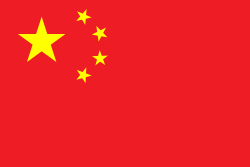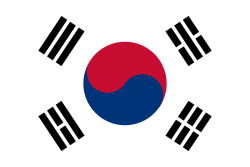Wang Chi-lin

Wang Chi-lin (chinesisch 王齊麟; * 18. Januar 1995 in Taipeh) ist ein taiwanischer Badmintonspieler. Er ist zweifacher Goldmedaillengewinner bei Olympischen Spielen im Doppel.
Karriere
Wang Chi-Lin startete 2011 und 2012 bei den Badminton-Juniorenweltmeisterschaften und 2012 ebenfalls bei den Junioren-Badmintonasienmeisterschaft. 2013 siegte er bei den Polish International, den Czech International, den Maldives International und den Singapur International. 2021 qualifizierte er sich für die Olympischen Sommerspiele in Tokio und gewann Gold im Herrendoppel. Mit seinem Doppelpartner Lee Yang gewann Wang Chi-li auch bei den Olympischen Spielen 2024 in Paris die Goldmedaille im Herrendoppel. Im Finale besiegten sie das chinesische Doppel Liang Weikeng und Wang Chang mit 2:1 nach Sätzen. Nachdem das taiwanesische Doppel den ersten Satz mit 21-17 für sich hatte entscheiden können, verloren sie den zweiten Satz mit 18-21. Das taiwanesische Doppel Wang und Lin konnte sich dann in einem spannenden dritten Satz mit 21-19 durchsetzen.[1]
Wang Chi-lin und Lee Yang sind damit das einzige Doppelpaar in der Geschichte des Sports, das gemeinsam zwei olympische Goldmedaillen gewonnen hat. Nur dem Chinesen Fu Haifeng gelang dies mit unterschiedlichen Partnern.[2]
Weblinks
- Wang Chi-lin beim Badminton-Weltverband
- Eintrag bei olympics.com
Einzelnachweise
- ↑ Olympia: Gold für Taiwan im Badminton-Doppel der MännerRTI (Radio Taiwan International). In: RTI (Radio Taiwan International). RTI (Radio Taiwan International), 5. August 2024, abgerufen am 5. August 2024 (twi).
- ↑ badzine.de: Lee Yang und Wang Chi-Lin erneut Olympiasieger im Herrendoppel. 4. August 2024, abgerufen am 5. August 2024.
| Personendaten | |
|---|---|
| NAME | Wang, Chi-lin |
| ALTERNATIVNAMEN | 王齊麟 |
| KURZBESCHREIBUNG | taiwanischer Badmintonspieler |
| GEBURTSDATUM | 18. Januar 1995 |
| GEBURTSORT | Taipeh, Taiwan |
Auf dieser Seite verwendete Medien
Olympic Rings without "rims" (gaps between the rings), As used, eg. in the logos of the 2008 and 2016 Olympics. The colour scheme applied here was specified in 2023 guidelines.
Flag of South Korea from 21 February 1984 to 15 October 1997, when the exact colors were specified into their shades.
bendera Indonesia
Chinese Taipei Olympic Flag. According to the official website of Chinese Taipei Olympic Committee, Blue Sky(circle) & White Sun(triangles) above the Olympic rings is neither the National Emblem of the Republic of China, nor the Party Emblem of Kuomintang (KMT), but a design in between, where the triangles do not extend to the edge of the blue circle, as registered at International Olympic Committee in 1981 and digitally rendered in 2013. Besides, the blue outline of the five-petaled plum blossom is broader than the red one. Moreover, the CMYK code of the blue one and the Blue Sky & White Sun is "C100-M100-Y0-K0", and different from the Olympic rings (C100-M25-Y0-K0). Note that it's the only version recognized by IOC.
Chinese Taipei Olympic Flag. According to the official website of Chinese Taipei Olympic Committee, Blue Sky(circle) & White Sun(triangles) above the Olympic rings is neither the National Emblem of the Republic of China, nor the Party Emblem of Kuomintang (KMT), but a design in between, where the triangles do not extend to the edge of the blue circle, as registered at International Olympic Committee in 1981 and digitally rendered in 2013. Besides, the blue outline of the five-petaled plum blossom is broader than the red one. Moreover, the CMYK code of the blue one and the Blue Sky & White Sun is "C100-M100-Y0-K0", and different from the Olympic rings (C100-M25-Y0-K0). Note that it's the only version recognized by IOC.
Autor/Urheber: 總統府, Lizenz: CC BY 2.0
Official Photo by Makoto Lin / Office of the President
Flag of South Korea from October 1997 to May 2011. In May 2011, the exact colors were specified into their current shades.







